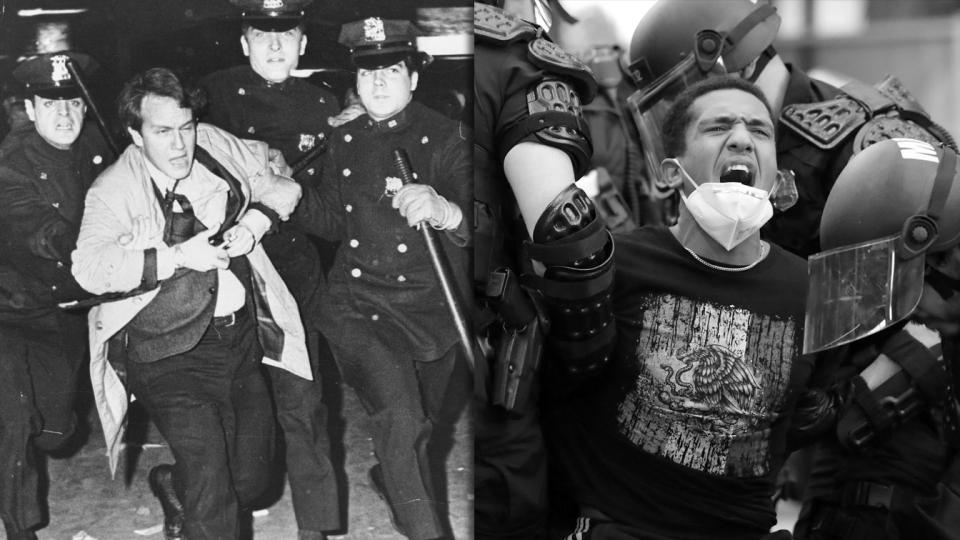Historian Rick Perlstein says that violent protests could hurt Trump in November
Historian and Pulitzer Prize-winning author Rick Perlstein says that history suggests the looting and sometimes violent protests now occurring on American streets could hurt President Trump with voters come November.
Perlstein’s 2008 bestseller, “Nixonland: The Rise of a President and the Fracturing of America,” is a social and political history that begins with the 1965 Watts riots and reveals how out of the ashes of the tumult of the 1960s, Richard Nixon rose to and stayed in power.
When asked if he sees parallels between 1968 and today and how they might apply to the coming presidential election, Perlstein said he believes the unrest of the past shows that Trump could be vulnerable, if only because voters have shown they worry about too much disorder.
“Between 1968 and 1970 there was lots of disorder — two-thirds of the colleges in America went on strike — crazy stuff, tanks running down the street in Berkeley in 1969, ... Kent State,” Perlstein said in an interview with Yahoo News’ “Skullduggery” podcast.
That unrest, Perlstein argues, damaged Nixon and the GOP in the 1970 midterms, in which Democrats kept control of the Senate and increased its majority in the House.
“Richard Nixon was very explicit: He toured and gave dozens of speeches for congressional candidates in which he basically said ... he used the words ‘thugs’ and ‘hoodlums’… and made that basically a nationalized election around the theme of law and order. The Republicans way underperformed expectations.”
Perlstein said that in 1992 when Bill Clinton challenged incumbent President George Bush, Clinton found himself on the defensive as the president “implied” that Democratic policies contributed to that year’s riots in Los Angeles. Clinton rejected that notion forcefully and won, Perlstein said.
“People may blame the disorder — and this is a pretty good discernment on the part of voters if they do — on the guy who’s in charge,” Perlstein said.
He added that history shows most Americans do not want to vote for outright bigots. Nixon and Reagan understood that, Perlstein said. Even as they used race to fearmonger in their campaigns, he said, both were careful not to be too overt.

Download or subscribe on iTunes: “Skullduggery” from Yahoo News
“Americans don’t want to be seen as racist, and they don’t want to be associated with people that are perceived as racist candidates,” Perlstein said. “Nixon and Reagan profoundly understood this. Richard Nixon always publicly upheld the goals of the civil rights movement.”
Reagan did too, Perlstein said. He added that his new book, “Reaganland: America’s Right Turn 1976-1980,” which hits bookstores in August, includes details about Reagan’s pollster, Richard Wirthlin, who in 1980 decided to counter some voters’ assumptions that Reagan was racist.
“Wirthlin came up with this idea: ‘People think that we’re racist, people think that Reagan is running on white backlash — why don’t we have lots of campaign events before black audiences?’” Perlstein said. Wirthlin realized the tactic would “reassure voters that they’re not voting for a bigot and they’re not bigots themselves. I don’t think the candidate of ‘They’re sending their rapists’ can credibly pull off that trick.”
_____
Click here for the latest coronavirus news and updates. According to experts, people over 60 and those who are immunocompromised continue to be the most at risk. If you have questions, please refer to the CDC’s and WHO’s resource guides.
Read more:

